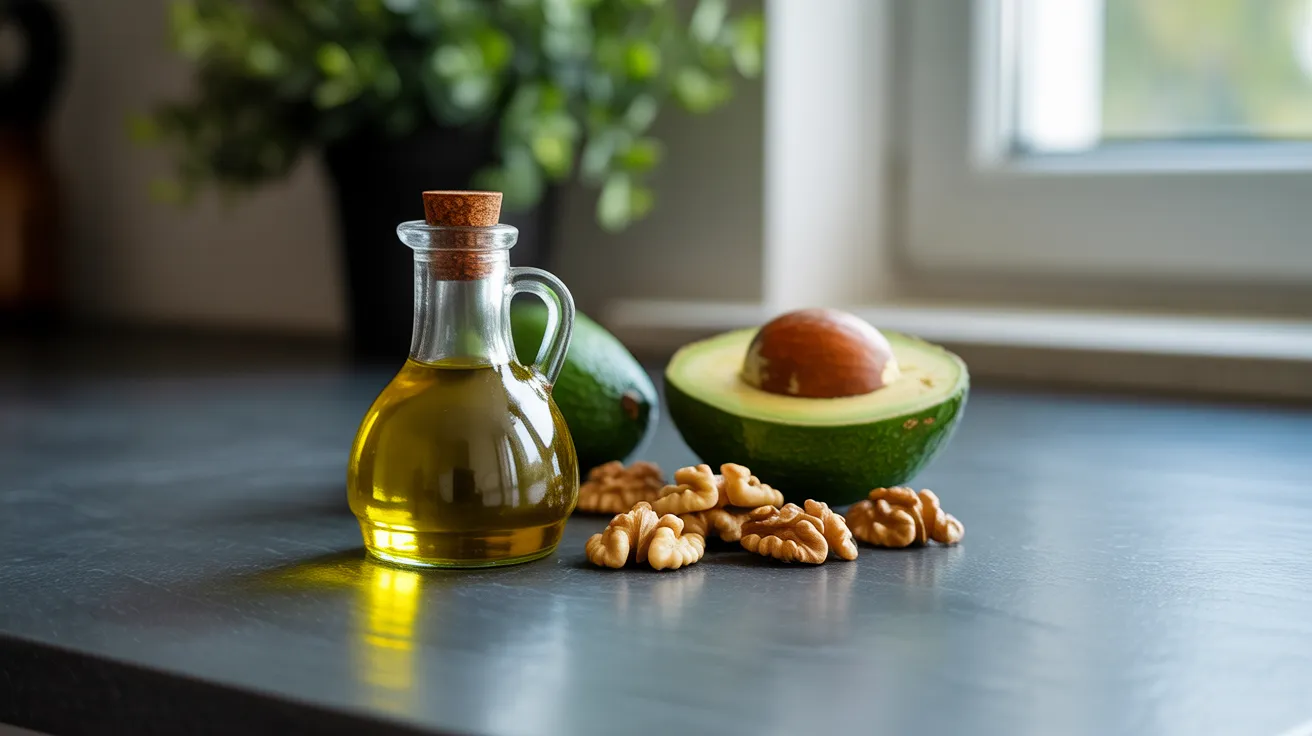
Introduction: Prioritizing Your Health with a Heart-Healthy Diet
As we navigate our golden years, the choices we make every day have a profound impact on our health, independence, and overall quality of life. One of the most powerful tools we have at our disposal is the food we put on our plates. A thoughtful, nourishing diet is more than just fuel; it’s a cornerstone of well-being, especially when it comes to the tireless engine that is our heart. Prioritizing heart health through nutrition isn’t about restrictive or complicated rules. Instead, it’s about embracing a lifestyle that supports strength, vitality, and longevity, allowing you to age gracefully and with confidence.
Maintaining a healthy heart is central to staying active and engaged in the activities you love, whether that’s spending time with grandchildren, gardening, traveling, or simply enjoying a peaceful day at home. The right eating plan can help manage blood pressure, control cholesterol levels, and maintain a healthy weight—all key factors in promoting long-term cardiac wellness. This guide is designed to provide you with clear, practical information on the best heart-healthy senior diets. We will explore gentle, effective approaches to nutrition, always emphasizing safety and the crucial importance of partnering with your healthcare provider to find the plan that is perfect for you.
Authoritative health information for seniors is provided by the National Institute on Aging (NIA) and the Centers for Disease Control and Prevention (CDC).

Understanding the Health Benefits (and Any Risks)

The Powerful Benefits of a Heart-Smart Eating Plan
Adopting a heart-healthy diet can bring about remarkable improvements in your health, many of which work together to protect your cardiovascular system. Think of it as providing your body with the best building blocks to keep it running smoothly. One of the primary benefits is the management of blood pressure. Diets rich in fruits, vegetables, and low-fat dairy, and low in sodium, can help naturally lower high blood pressure, reducing the strain on your arteries and heart.
Another significant advantage is improved cholesterol levels. Certain foods, particularly those high in saturated and trans fats, can increase the level of “bad” LDL cholesterol in your blood. This type of cholesterol contributes to the buildup of plaque in your arteries, a condition known as atherosclerosis, which can lead to heart attacks and strokes. A heart-healthy diet focuses on unsaturated fats (found in olive oil, avocados, and nuts) and soluble fiber (found in oats, beans, and apples), which help lower LDL cholesterol and promote better blood flow. These thoughtful nutrition tips are a cornerstone of preventing cardiovascular disease.
Furthermore, these eating patterns support stable blood sugar levels. By emphasizing whole grains over refined carbohydrates and processed sugars, you can prevent the sharp spikes and crashes in blood sugar that can damage blood vessels over time. This is especially important for individuals with or at risk for type 2 diabetes, a condition closely linked to heart disease. Finally, a nutrient-dense diet helps with weight management. Carrying excess weight, particularly around the midsection, puts extra stress on the heart. By focusing on wholesome, satisfying foods, you can more easily maintain a healthy weight without feeling deprived.

Potential Risks and Important Considerations
While the benefits are clear, it is essential to approach any dietary change with caution and awareness. There is no one-size-fits-all solution, and what works for one person may not be suitable for another. A primary consideration is how a new diet might interact with existing health conditions. For example, individuals with kidney disease may need to monitor their intake of protein, potassium, and phosphorus—nutrients that are plentiful in some heart-healthy foods. Similarly, those with diabetes must carefully manage their carbohydrate intake to maintain blood sugar control.
Medication interactions are another critical safety concern. Certain foods can affect how your body processes medications. For instance, leafy greens rich in Vitamin K can interfere with the effectiveness of blood thinners like warfarin. Grapefruit and its juice are known to interact with a wide range of medications, including statins used to lower cholesterol. It is absolutely vital to discuss any significant dietary changes with your doctor or a registered dietitian who can review your current medications and health status.
Finally, overly restrictive diets can sometimes lead to unintended nutrient deficiencies. As we age, our bodies may need more of certain vitamins and minerals, such as calcium and vitamin D for bone health or vitamin B12 for nerve function and red blood cell production. Abruptly cutting out entire food groups without a well-thought-out plan can leave you lacking these essential nutrients. The goal of healthy eating is to nourish your body, not deprive it. The most successful and sustainable senior diets are balanced, varied, and tailored to your unique needs.
Authoritative health information for seniors is provided by the National Institute on Aging (NIA) and the Centers for Disease Control and Prevention (CDC).

A Step-by-Step Guide to Adopting a Heart-Healthy Diet Safely
Making changes to your eating habits can feel overwhelming, but a slow and steady approach is often the most effective. Rather than overhauling your entire diet overnight, focus on making small, manageable adjustments. Below are two of the most well-researched and recommended dietary patterns for cardiac wellness, along with simple steps to incorporate their principles into your life.

1. The Mediterranean Diet: A Lifestyle of Flavor and Health
The Mediterranean diet is more of an eating pattern than a strict diet. Inspired by the traditional cuisines of countries like Greece and Italy, it is consistently ranked as one of the best for heart health. It emphasizes whole, minimally processed foods and is known for its delicious flavors.
Core Principles:
- Eat Plenty of Plants: Make vegetables, fruits, legumes (beans, lentils, chickpeas), nuts, seeds, and whole grains the foundation of your meals. Aim to fill at least half your plate with vegetables at lunch and dinner.
- Switch to Healthy Fats: Replace butter and margarine with extra virgin olive oil as your primary fat for cooking and dressings. Avocados, nuts, and seeds are also excellent sources of healthy fats.
- Choose Fish Over Red Meat: Aim to eat fish and seafood, especially fatty fish like salmon, mackerel, and sardines, at least twice a week. These are rich in omega-3 fatty acids, which are excellent for heart health. Limit red meat (beef, pork) to a few times a month.
- Enjoy Dairy in Moderation: Incorporate cheese and yogurt in smaller portions.
- Flavor with Herbs and Spices: Use garlic, onions, basil, oregano, rosemary, and other herbs to season your food instead of relying heavily on salt.
Simple Steps to Get Started:
Step 1: Start by making one simple swap. For example, use olive oil instead of butter for cooking this week. Or, add a large salad to your dinner every night.
Step 2: Try “Meatless Monday.” Dedicate one day a week to meals built around beans, lentils, or vegetables. A hearty lentil soup or a black bean burger on a whole-wheat bun are great options.
Step 3: Snack smarter. Instead of reaching for chips or cookies, have a handful of almonds, a piece of fruit, or some Greek yogurt.

2. The DASH Diet: A Focused Approach to Lowering Blood Pressure
The DASH (Dietary Approaches to Stop Hypertension) diet was specifically designed to help lower high blood pressure. It is rich in the minerals that help regulate blood pressure—potassium, calcium, and magnesium—while being low in sodium, saturated fat, and sugar.
Core Principles:
- Dramatically Reduce Sodium: The standard DASH diet aims for no more than 2,300 milligrams (mg) of sodium per day, with a lower-sodium version capping it at 1,500 mg. This involves avoiding processed foods, canned soups, and cured meats, which are often loaded with salt.
- Load Up on Fruits and Vegetables: These are packed with potassium and fiber. Aim for 4-5 servings of each per day. A serving might be a medium apple or half a cup of cooked broccoli.
- Embrace Whole Grains: Choose brown rice, quinoa, oats, and whole-wheat bread over their white, refined counterparts. Aim for 6-8 servings a day (a serving is one slice of bread or a half-cup of cooked pasta).
- Include Lean Protein and Low-Fat Dairy: Poultry without the skin, fish, and beans are excellent protein sources. Low-fat or fat-free milk, yogurt, and cheese provide calcium.
Simple Steps to Get Started:
Step 1: Read food labels. Become a detective and look for the sodium content on packaged foods. You may be surprised where salt is hiding. Choose “low-sodium” or “no salt added” versions whenever possible.
Step 2: Rinse canned foods. If you use canned beans or vegetables, rinsing them under water can wash away a significant amount of sodium.
Step 3: Add one extra serving of vegetables to your day. This could be as simple as adding spinach to your morning eggs or having a side of steamed carrots with lunch.
Authoritative health information for seniors is provided by the National Institute on Aging (NIA) and the Centers for Disease Control and Prevention (CDC).

Key Signs It’s Time to Consult a Doctor
This is the most important section of this guide. Your health and safety are paramount. While adopting a healthier diet is a positive step, it is not a substitute for professional medical care. You should always consult your doctor before making any significant changes to your diet or lifestyle. It is especially critical to seek immediate medical advice if you experience any of the following symptoms, which could indicate a serious heart-related issue.
Seek Immediate Medical Attention if You Experience:
- Chest Pain or Discomfort: This includes any feeling of pressure, squeezing, fullness, or pain in the center of your chest that lasts for more than a few minutes or goes away and comes back.
- Pain in Other Areas of the Upper Body: Symptoms can include pain or discomfort in one or both arms, the back, neck, jaw, or stomach.
- Shortness of Breath: This may occur with or without chest discomfort.
- Other Signs: These can include breaking out in a cold sweat, nausea, lightheadedness, or sudden dizziness.
Schedule an Appointment with Your Doctor if:
- You Plan to Start a New Diet: This is non-negotiable, especially if you have pre-existing conditions such as high blood pressure, diabetes, high cholesterol, or kidney disease. Your doctor can help you choose a plan that is safe and effective for your specific health profile.
- You Are Taking Medications: As mentioned earlier, foods can interact with prescription drugs. A physician or pharmacist can review your medications and advise you on any potential food-drug interactions.
- You Experience Negative Side Effects from a Diet: If a new eating plan causes persistent fatigue, digestive upset, dizziness, or unintentional and rapid weight loss, it may not be the right fit for you. These could be signs that your body isn’t getting the nutrients it needs.
- You Notice Swelling: Sudden or worsening swelling (edema) in your legs, ankles, feet, or abdomen can be a sign of heart failure and requires prompt medical evaluation.
Remember, your doctor and a registered dietitian are your best partners in health. They can provide personalized nutrition tips and guidance to ensure your journey toward better cardiac wellness is both safe and successful.
Authoritative health information for seniors is provided by the National Institute on Aging (NIA) and the Centers for Disease Control and Prevention (CDC).

Making It a Part of Your Daily Routine
The secret to long-term success with any healthy lifestyle change is consistency. The goal is not perfection, but progress. Integrating new eating habits into your daily life should be a gradual and enjoyable process. Here are some practical tips to help make your heart-healthy diet a sustainable part of your routine.
Start Small and Build Momentum: Trying to change everything at once can be daunting. Instead, pick one or two small, achievable goals for the week. For example, you might decide to eat a piece of fruit with your breakfast every day or switch from white bread to whole-wheat bread. Once that feels like a normal habit, add another small change. These little victories build confidence and make the transition feel much more manageable.
Plan Your Meals: Taking a little time at the beginning of the week to plan your meals can save you from making less-healthy choices when you’re tired or hungry. Create a simple menu for the week and make a corresponding grocery list. This ensures you have all the healthy ingredients you need on hand and reduces the temptation of takeout or processed convenience foods.
Cook in Batches: If cooking every day feels like a chore, try batch cooking. Prepare a large pot of lentil soup, a tray of roasted vegetables, or a batch of grilled chicken breasts on a Sunday. You can then portion these out for quick and easy meals throughout the week. Having healthy options ready to go makes it simple to stay on track.
Focus on Addition, Not Subtraction: Shift your mindset from what you “can’t” eat to what you “can” eat. Instead of thinking about cutting out sweets, focus on adding in more delicious fruits. Instead of worrying about less red meat, get excited about trying a new fish recipe. A positive and abundant mindset makes healthy eating feel like a joyful exploration rather than a punishment.
Stay Hydrated: Sometimes our bodies mistake thirst for hunger. Drinking plenty of water throughout the day is crucial for overall health and can help you manage your appetite. Keep a water bottle handy and sip on it regularly. If you find plain water boring, try infusing it with slices of lemon, cucumber, or mint.
Listen to Your Body: Pay attention to your body’s hunger and fullness cues. Eat when you’re hungry and stop when you’re satisfied, not stuffed. Eating slowly and mindfully, without distractions like the television, can help you better recognize these signals.
Authoritative health information for seniors is provided by the National Institute on Aging (NIA) and the Centers for Disease Control and Prevention (CDC).

Frequently Asked Questions
Is it too late in life to change my diet and improve my heart health?
Absolutely not. It is never too late to make positive changes that benefit your health. The human body has a remarkable ability to heal and respond to better nutrition at any age. Studies have shown that adopting a heart-healthy diet, even later in life, can significantly reduce the risk of heart attack and stroke, help lower blood pressure and cholesterol, and improve overall vitality. Every healthy meal is a step in the right direction for your long-term cardiac wellness.
Do I have to give up all my favorite foods to be healthy?
This is a common concern, but a heart-healthy lifestyle is about balance and moderation, not complete deprivation. There is still room for occasional treats. The key is to make nutrient-dense foods the foundation of your diet—the foods you eat most of the time. You might find you can make healthier versions of your favorite dishes. For example, if you love pizza, try making it at home on a whole-wheat crust with lots of vegetable toppings and a moderate amount of cheese. The goal is a sustainable pattern of eating that you enjoy, not a short-term diet that makes you miserable.
How can I follow a heart-healthy diet on a fixed income?
Eating healthy does not have to be expensive. Some of the most nutrient-packed foods are also very affordable. Legumes like beans, lentils, and chickpeas are an incredibly inexpensive source of protein and fiber. Buying fruits and vegetables that are in season is often cheaper. Don’t overlook the frozen food aisle; frozen fruits and vegetables are just as nutritious as fresh (and sometimes more so) and can be much more budget-friendly. Planning your meals to reduce food waste and focusing on simple, whole foods over expensive, pre-packaged “health” products are excellent strategies.
Does Medicare cover nutrition counseling?
This is an important question. Under certain circumstances, Medicare Part B may cover medical nutrition therapy (MNT) services provided by a registered dietitian. Typically, this coverage is available for individuals with a diagnosis of diabetes or kidney disease. Coverage can vary, so it is essential to talk to your doctor and check your specific plan. For the most accurate and up-to-date information on what your plan covers, you should consult the official government source. For insurance and medical coverage questions, refer to Medicare.gov. For mental health support, consult the National Institute of Mental Health (NIMH).
Are supplements like fish oil or CoQ10 necessary for my heart?
While some supplements have been studied for heart benefits, the safest and most effective approach is to get your nutrients from whole foods first. For example, eating fatty fish twice a week provides a wealth of omega-3s along with other beneficial nutrients that you won’t get from a pill. Supplements can sometimes interact with medications or cause unintended side effects. You should never start taking a new supplement without first discussing it with your doctor or pharmacist. They can assess whether it is necessary and safe for you based on your individual health profile and current medication list.
Disclaimer: This article is for informational purposes only and does not constitute medical advice. The content is not intended to be a substitute for professional medical advice, diagnosis, or treatment. Always seek the advice of your physician or other qualified health provider with any questions you may have regarding a medical condition.
|
Fact-Checked Content
Our editorial team reviews all content for accuracy and updates it regularly. Learn about our editorial process →
|

















